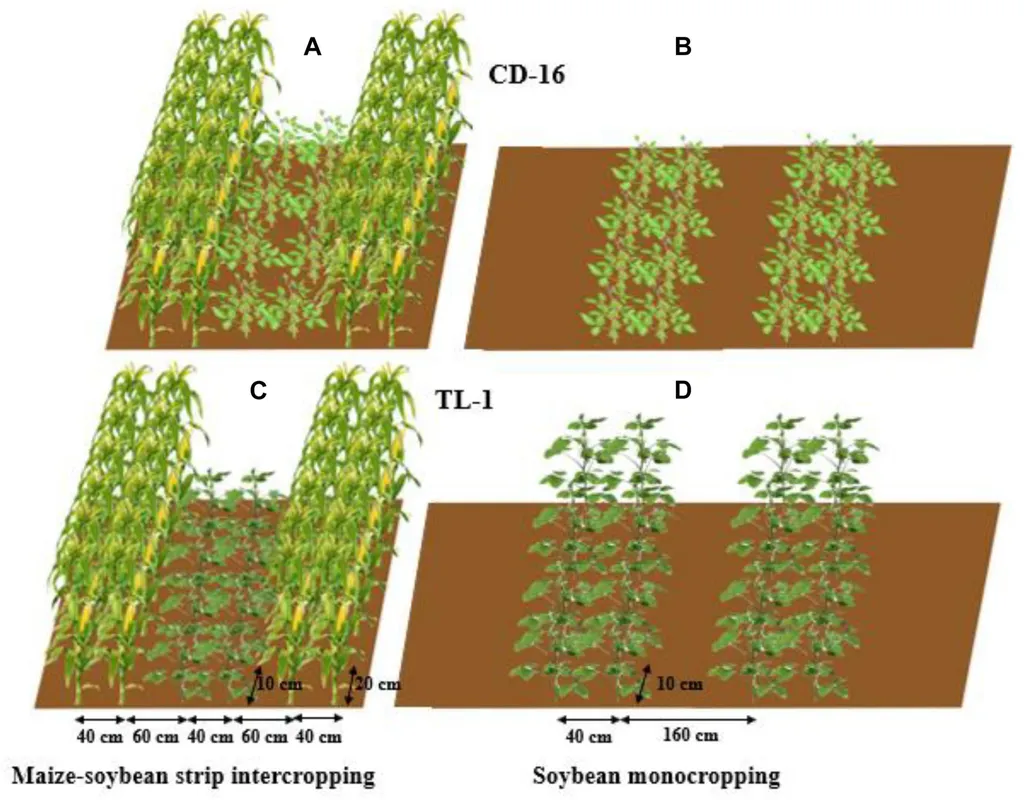In the heart of China, a groundbreaking study is reshaping our understanding of soybean cultivation and its potential to revolutionize intercropping systems. Led by Fengyi Zhang from the Soybean Research Institute of Heilongjiang Academy of Agricultural Sciences, the research, published in *BMC Plant Biology* (which translates to “Chinese Journal of Plant Biology”), evaluated 460 soybean accessions from a global germplasm collection, uncovering critical insights into shade tolerance and its implications for sustainable agriculture.
The study, conducted at two contrasting locations—Heilongjiang (HLJ) and Inner Mongolia (NM)—employed a sophisticated experimental design to assess the performance of soybean genotypes under shaded and unshaded conditions. By mimicking maize-soybean intercropping systems, the researchers aimed to identify elite genotypes that could thrive in such environments. “We wanted to understand how soybeans respond to shade and identify genotypes that not only tolerate shade but also perform well in intercropping systems,” Zhang explained.
The results were striking. Soybean plants exhibited typical avoidance responses to shade, with significant increases in plant height and basal pod height. However, these adaptations came at a cost, as reproductive output, including pod number per plant and seed yield per plant, saw substantial declines. “The trade-off between vegetative growth and reproductive output under shade is a critical factor to consider when developing intercropping-compatible varieties,” Zhang noted.
One of the most compelling findings was the geographic variation in shade tolerance. Accessions from Inner Mongolia demonstrated higher shade tolerance indices compared to those from Heilongjiang, suggesting that local adaptation plays a significant role in shade tolerance. This insight could be pivotal for breeders looking to develop region-specific varieties.
The study also identified 120 elite, stable cultivars that maintained high performance under both shaded and unshaded conditions, as well as 100 shade-adaptive cultivars that showed enhanced plasticity. These genotypes represent valuable resources for developing intercropping-compatible varieties, potentially boosting agricultural productivity and sustainability.
The implications for the energy sector are profound. As the world seeks to reduce its carbon footprint, intercropping systems that maximize land use efficiency and minimize environmental impact are gaining traction. Soybeans, a crucial crop for biofuel production, could play a pivotal role in this transition. By identifying and cultivating shade-tolerant varieties, farmers can enhance yields in intercropping systems, ultimately contributing to a more sustainable and energy-efficient agricultural landscape.
This research not only sheds light on the genetic architecture of soybean shade tolerance but also provides a framework for evaluating germplasm. As Zhang and his team continue to unravel the complexities of soybean adaptation, their work promises to shape the future of sustainable agriculture and energy production. The findings, published in *BMC Plant Biology*, offer a roadmap for breeders and researchers alike, paving the way for innovative solutions in the field.

